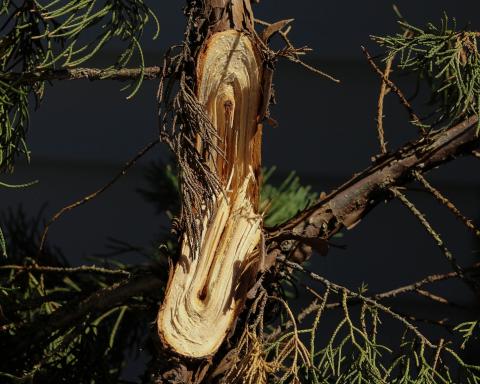Repairing Winter Tree and Shrub Damage

Winters in New Hampshire can be tough for many landscape plants. Fluctuating temperatures, drying winds, salt spray, snow, ice, and rodents all have the potential to seriously damage trees and shrubs. This past winter was particularly challenging and homeowners around the state are reporting significant winter injury to many of their woody plants. Symptoms of winter damage can take many forms, including: discolored evergreen needles or leaves, dead branch tips and branches, broken branches, heaved root balls, frost cracks, and girdled trunks and branches.
Badly broken and dead branches, or those that have been completely girdled by rodents, can be removed without hesitation right now. However, for more subtle injuries, it’s easiest to evaluate the level of damage that plants have suffered once they start to grow again. When new growth begins, you’ll be able to tell which buds and branches are alive and which should be removed. If you’re not sure whether a branch is still alive or not, try scraping away some of the outer bark. Live branches will have a green cambial layer beneath, while dead branches will reveal only brown. Prune broken, dead or damaged branches to within one quarter inch of the next live bud, or to the branch collar of the next live branch using sharp, clean pruning tools. With proper care and a little luck, your injured plants should have a chance to recover this season.
Got questions? The Ask UNH Extension Infoline offers practical help finding answers for your home, yard, and garden questions. Call toll free at 1-877-398-4769, Monday to Friday, 9 a.m. to 2 p.m., or e-mail us at answers@unh.edu.
